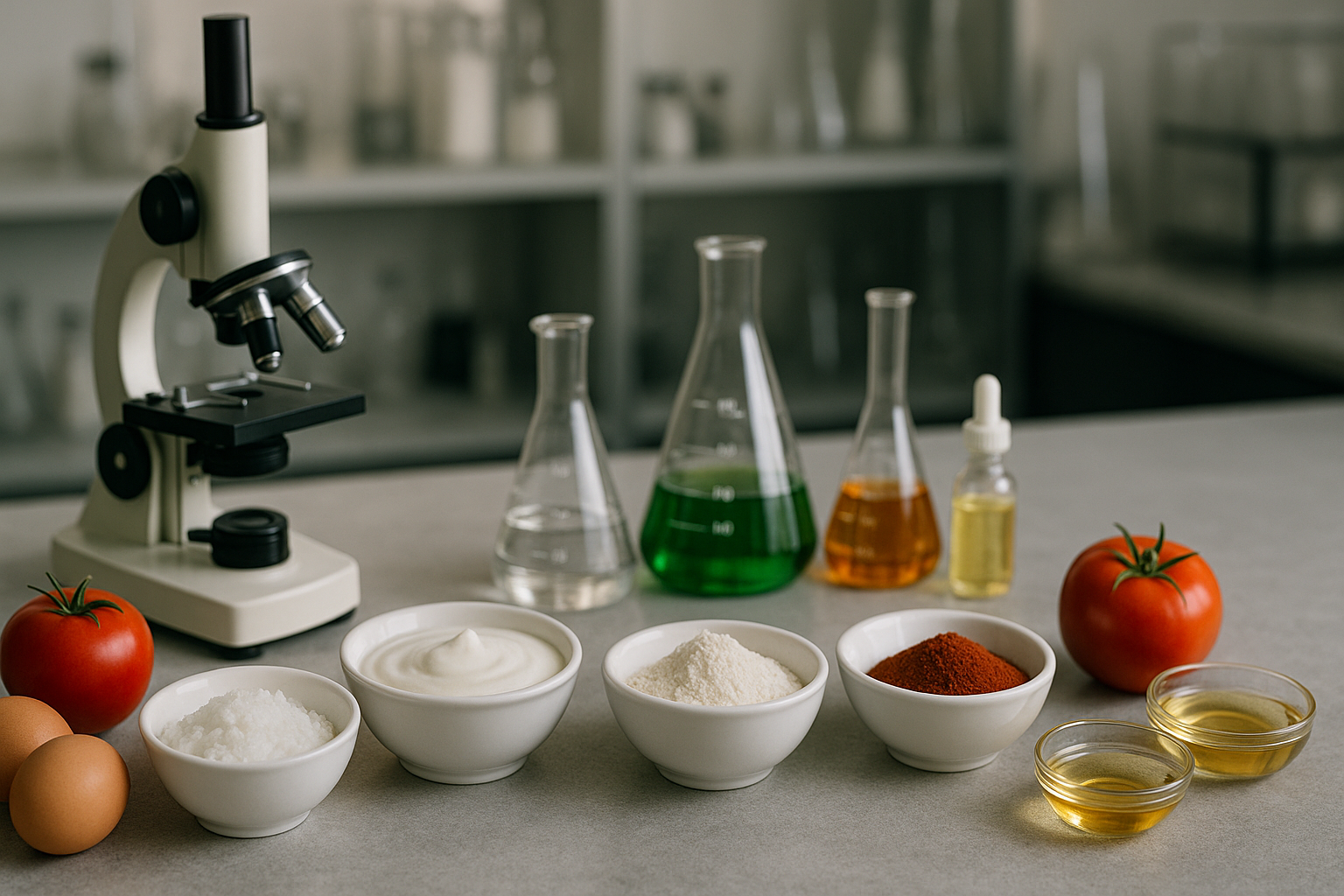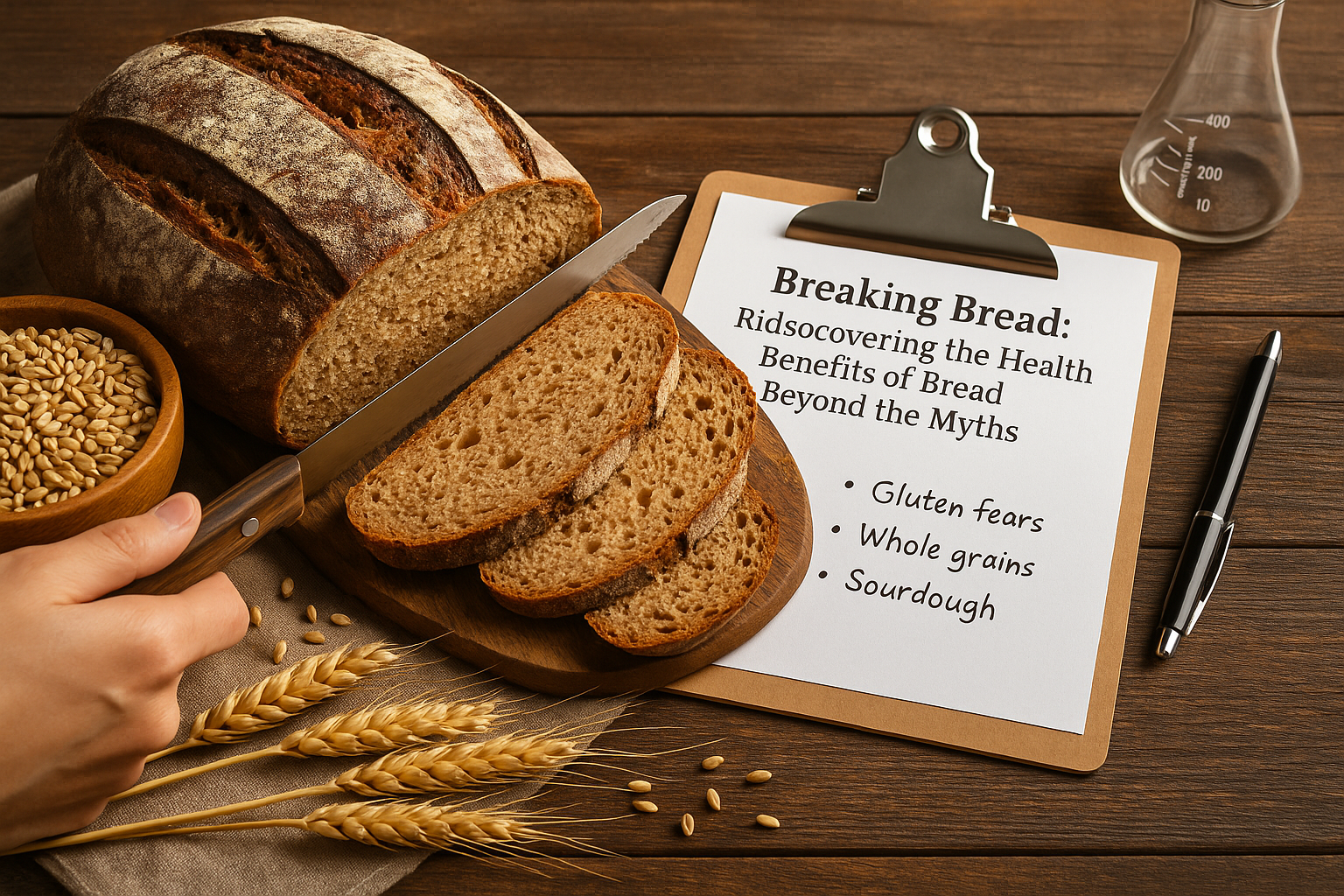
How Hydrocolloids Add Texture to Foods
SUBSCRIBE TO OUR BLOG
Promotions, new products, and recipes.
Hydrocolloids are a class of food additives that play a crucial role in the texture of food products. These substances, also known as gums, are added to a wide range of food and beverage products to influence their texture, stability, and other sensory characteristics. Hydrocolloids are versatile ingredients that can function as gelling agents, thickening agents, stabilizers, and emulsifiers, among other roles.
Key Takeaways:
- Hydrocolloids are food additives that influence the texture of food products.
- They play a range of functional roles, including gelling, thickening, and stabilizing.
- Hydrocolloids are widely used in food and beverage products to enhance texture and other sensory characteristics.
Understanding Hydrocolloids
Hydrocolloids are water-soluble polymers derived from natural or synthetic sources. They are widely used in the food industry as additives to improve texture, consistency, and stability. Hydrocolloids are known for their ability to bind water, thicken and gel liquids, and modify the rheology of food products.
Water-binding agents, as their name suggests, bind water to prevent moisture loss in food products. Some common hydrocolloids used as water-binding agents include pectin, carrageenan, and xanthan gum. Viscosifiers, on the other hand, give food products a specific viscosity or thickness. Examples of viscosifiers include carrageenan, guar gum, and locust bean gum.
Rheology modifiers are hydrocolloids that affect the flow properties of food products. They can make liquids thicker or thinner, depending on the desired texture. Common rheology modifiers used in the food industry include xanthan gum, agar, and carrageenan. Understanding the science of rheology is essential in designing food products with consistent and desirable texture.
The rheology of food products is affected by various factors, including temperature, pressure, and pH. Hydrocolloids can be used to modify the rheological properties of food products and achieve the desired texture, consistency, and stability.
Common Types of Hydrocolloids
Hydrocolloids are widely used in the food industry to enhance the texture and mouthfeel of various products. Here are some of the most common hydrocolloids:
| Hydrocolloid | Source | Functions | Applications |
|---|---|---|---|
| Agar | Seaweed | Gelling, thickening, stabilizing | Jellies, puddings, confectionery, dairy products, sauces |
| Carrageenan | Red seaweed | Thickening, gelling, stabilizing | Dairy products, processed meats, pet foods, toothpaste |
| Pectin | Fruits, vegetables, legumes | Gelling, thickening, stabilizing | Jams, jellies, fruit fillings, dairy products, sauces |
| Gelatin | Collagen from animal bones and skin | Gelling, foaming, stabilizing, emulsifying | Gummies, marshmallows, desserts, dairy products, meat products |
| Xanthan gum | Fermentation of corn, soy, or wheat | Thickening, stabilizing, emulsifying | Dressings, sauces, bakery products, dairy products, beverages |
Other hydrocolloids frequently used in the food industry include cellulose gum, guar gum, locust bean gum, and carrageenan blends. Each hydrocolloid has specific textural properties and applications, making them suitable for different formulations.
Gelling Agents
The thickening properties of gelling agents are due to their ability to absorb water, forming a three-dimensional network that traps liquid. Hydrocolloids such as pectin, carrageenan, and agar are commonly used as gelling agents in a wide range of food products.
Agar, for instance, is extracted from seaweed and has a strong gelling ability. It is commonly used in making candy, jellies, and even some cheeses. Carrageenan, derived from red seaweed, is known for its strong water-binding and gelling ability and is used in dairy products, processed meats, and desserts. Pectin is a naturally occurring gelling agent found in fruits, commonly used in making jams and jellies.
Hydrocolloids that act as gelling agents have a significant impact on the texture of food. By creating a solid structure, they can improve the overall mouthfeel and add a distinct texture that enhances the sensory experience.
Examples of Food Products that Use Gelling Agents:
| Food Product | Gelling Agent Used |
|---|---|
| Jam | Pectin |
| Candy | Agar |
| Mousse | Gelatin |
Thickening Agents
Hydrocolloids serve as thickening agents in many food products, providing a desirable consistency, stability, and mouthfeel. They increase the viscosity of liquid or semi-liquid formulations by binding with water molecules and forming a network structure that traps air and stabilizes emulsions. Various hydrocolloids can be used as thickening agents, depending on the type of food and the desired texture.
Xanthan gum is a commonly used hydrocolloid for thickening, with the ability to increase viscosity in low concentrations. It is particularly useful in sauces, dressings, and dips, where it imparts a smooth and creamy texture. Guar gum is another popular thickener that creates a highly viscous solution, suitable for thickening puddings, custards, and ice creams.
Locust bean gum data-mce-fragment="1"> and agar are also employed as thickening agents, particularly in high-sugar and high-fat formulations. They create a gel-like structure that prevents syneresis, the separation of liquid from solid components. In baked goods, pectin adds viscosity and gel strength, creating a desirable texture and preventing moisture loss.
Stabilizers and Emulsifiers
Hydrocolloids are commonly used as stabilizers and emulsifiers in food formulations. Stabilizers are used to prevent separation in emulsions, while emulsifiers improve the stability and texture of the resulting product.
For example, in dressings, hydrocolloids such as xanthan gum and guar gum are used as stabilizers to prevent the oil and vinegar or other liquid components from separating. In ice creams, stabilizers such as carrageenan, locust bean gum, and gelatin are used to maintain a smooth, creamy texture and prevent the formation of ice crystals.
Emulsifiers are used to help oil and water-based ingredients mix together and create a smooth, homogenous mixture. In mayonnaise, egg yolks act as natural emulsifiers, but hydrocolloids such as xanthan gum and carrageenan can also be added to improve texture and stability.
Hydrocolloids are chosen based on the specific application. For example, carrageenan is often used in dairy products like chocolate milk as a stabilizer because it can withstand high heat and acid conditions. Xanthan gum is widely used as an emulsifier in salad dressings and sauces because it can create a thicker, more stable texture.
Hydrocolloids in Baked Goods
Hydrocolloids play a crucial role in the texture and quality of baked goods. They are used to improve dough elasticity, moisture retention, and reduce staling. In particular, hydrocolloids are essential in gluten-free baking, where the absence of gluten can lead to dense and crumbly products.
One of the most commonly used hydrocolloids in baking is xanthan gum. It acts as a binding agent, allowing dough to retain its shape and structure. Additionally, xanthan gum improves moisture retention, resulting in bread that stays fresher for longer.
Another important hydrocolloid in baking is guar gum. It functions as a thickening agent, improving the viscosity of batter and dough. Guar gum also helps to prevent the separation of ingredients in products such as cake mixes and frostings.
Agar is another hydrocolloid with baking applications. It is often used as a vegan alternative to gelatin in recipes such as pies, cakes, and custards, providing a firm and stable texture.
Hydrocolloids can also be used to enhance the texture and mouthfeel of pastry creams and fillings. For example, carrageenan is a popular hydrocolloid used in cream fillings for its ability to create a smooth and creamy texture. Pectin is another hydrocolloid commonly used in fruit fillings for its gelling properties.
Hydrocolloids in Dairy Products
Hydrocolloids are commonly used in dairy products to improve their texture, stability, and sensory characteristics. The addition of hydrocolloids can help create a smooth and creamy mouthfeel, prevent sedimentation, and ensure consistent product quality.
One of the most commonly used hydrocolloids in dairy products is carrageenan, a seaweed-derived polysaccharide. It is often used in dairy products like chocolate milk, ice cream, and yogurt to improve their texture and prevent separation. Xanthan gum is another popular hydrocolloid used in dairy applications, particularly in sour cream and cream cheese, due to its stabilizing properties.
Gelatin is often used in dairy-based desserts like custards, puddings, and cheesecakes to create a softer texture and smooth mouthfeel. Pectin, derived from fruit, is used as a gelling agent in jams, jellies, and fruit-based dairy desserts like mango or strawberry yogurt.
Overall, hydrocolloids play a vital role in dairy product formulations, helping to create stable, consistent, and satisfying products that consumers enjoy.
Hydrocolloids in Meat and Poultry Products
Hydrocolloids play a critical role in improving the texture, juiciness, and binding properties of meat and poultry products. They are used extensively in meat-based foods to enhance the sensory experience and optimize processing conditions.
One of the primary functions of hydrocolloids in meat products is to increase water retention, which helps to improve juiciness and tenderness. Hydrocolloids such as carrageenan and xanthan gum are commonly used to achieve this effect. Carrageenan, for example, can increase the water retention capacity of meat products by up to 30 percent, resulting in a moister end product. Meanwhile, xanthan gum is particularly effective in low-fat meat products, where it can improve water binding and prevent protein denaturation.
Hydrocolloids are also used in processed meat products, such as sausages and deli meats, to influence the texture and consistency of the final product. They can improve the binding properties of meat emulsions, ensuring a uniform and stable texture. Hydrocolloids such as carrageenan, alginate, and gellan gum are well-suited for these applications.
Another application of hydrocolloids in meat products is to provide a meat-like texture in vegetarian or vegan meat analogs. Hydrocolloids such as konjac gum and methylcellulose can be used to mimic the chewy and fibrous texture of meat, creating products that are more appealing to consumers seeking plant-based alternatives.
Overall, hydrocolloids are a versatile tool for optimizing the texture and sensory properties of meat and poultry products. By improving water retention, binding properties, and texture, they can enhance the overall quality and appeal of these foods.
Hydrocolloids in Gluten-Free Products
For individuals with celiac disease or gluten intolerance, consuming gluten can lead to serious health consequences. As such, there has been an increasing demand for gluten-free food products. However, gluten plays a crucial role in providing structure, texture, and elasticity to baked goods, making it challenging to create desirable gluten-free alternatives. This is where hydrocolloids come in.
Hydrocolloids are commonly used in gluten-free products as a means of replicating the desired texture and structure typically achieved with gluten. They act as thickeners and stabilizers, providing viscosity and stability to gluten-free batters and doughs. Hydrocolloids also contribute to the elasticity and crumb structure of gluten-free bread, pasta, and other gluten-free alternatives.
Some of the most commonly used hydrocolloids in gluten-free products include xanthan gum, guar gum, and methylcellulose. Xanthan gum, in particular, is known for its ability to mimic the properties of gluten by providing structure and viscosity. Guar gum and methylcellulose are also effective thickeners and emulsifiers, contributing to the texture and stability of gluten-free products.
The use of hydrocolloids has enabled the production of a wide range of gluten-free products with desirable textures and structures. Gluten-free bread, for example, can be made light and fluffy with the addition of hydrocolloids, providing a satisfying eating experience. Pasta made with hydrocolloids can also have a similar texture to its gluten-containing counterpart, providing a more enjoyable dining experience for those with gluten sensitivities.
Hydrocolloids have revolutionized the gluten-free food industry, allowing individuals with celiac disease and gluten intolerance to enjoy foods they previously had to avoid.
Hydrocolloids and Tactile Surface in Food
Hydrocolloids play a crucial role in determining the texture of food, influencing not only the taste but also the tactile surface. The science of texture deals with the way food feels in the mouth, an essential aspect that affects its acceptability. Hydrocolloids contribute to the sensory experience by providing desirable mouthfeel, creaminess, or crunchiness.
The texture of food is perceived via the interaction between the food and the oral cavity, which depends on factors such as viscosity, elasticity, and surface roughness. Hydrocolloids modify these attributes, creating the desired tactile surface in a food product. For instance, a gelled dessert made with carrageenan will have a smooth, creamy texture with a silky mouthfeel, while a dressing containing xanthan gum will have a thicker, more stable consistency that coats the tongue evenly.
The sensory properties of food are essential in determining consumer preferences and acceptance. The mouthfeel, for instance, can influence the overall perception of the taste, with a creamy texture often associated with indulgence and richness. By using hydrocolloids, food manufacturers can create products that not only look and taste great but also feel right in the mouth, making them more appealing to consumers.
Conclusion
In conclusion, hydrocolloids play a crucial role in enhancing the texture and mouthfeel of food. These versatile food additives data-mce-fragment="1"> offer a range of functions, including gelling, thickening, stabilizing, and emulsifying. Understanding the properties and functions of hydrocolloids is essential in creating high-quality foods that meet customer expectations. Common types of hydrocolloids include agar, carrageenan, pectin, gelatin, and xanthan gum. These hydrocolloids each have specific textural properties and applications, making them suitable for a wide range of food products. Hydrocolloids are utilized in various food products such as baked goods, dairy products, meat and poultry products, and gluten-free products.
They contribute to improving dough elasticity, moisture retention, reducing staling, the stability of emulsions, the texture, stability, and mouthfeel of dairy products and enhancing texture, juiciness, and binding properties in meat and poultry products. The tactile surface of food is also influenced by hydrocolloids, providing desirable mouthfeel, creaminess, or crunchiness that helps to enhance the sensory experience. Innovation is a constant in the culinary world, and hydrocolloids have the potential to continue to play a crucial role in developing new and exciting food products for years to come. As such, understanding the science of texture and the crucial role that hydrocolloids play in enhancing food texture is essential for any food industry professional.
FAQ
Q: How do hydrocolloids add texture to foods?
A: Hydrocolloids, such as gelling agents, thickening agents, stabilizers, and emulsifiers, play a crucial role in enhancing the texture of foods. They can create gels, increase viscosity, stabilize emulsions, and improve mouthfeel, contributing to the overall sensory experience.
Q: What are hydrocolloids?
A: Hydrocolloids are food additives that have the ability to bind water, modify viscosity, and influence rheology. They are often derived from plant, animal, or microbial sources and are used in various food applications to achieve desired texture and consistency.
Q: What are some common types of hydrocolloids?
A: Some commonly used hydrocolloids in food production include agar, carrageenan, pectin, gelatin, and xanthan gum. Each hydrocolloid has unique textural properties and applications in different food products.
Q: How do gelling agents work?
A: Gelling agents are a subset of hydrocolloids that create gel-like structures in food. They work by forming a three-dimensional network that traps water molecules, resulting in the formation of a solid gel. Gelling agents are commonly used in products like jams, jellies, and custards.
Q: What role do thickening agents play in food?
A: Thickening agents, which are also hydrocolloids, increase the viscosity of food products, giving them a thicker and more stable consistency. They are frequently used in sauces, soups, and gravies to improve texture and mouthfeel.
Q: How do hydrocolloids function as stabilizers and emulsifiers?
A: Hydrocolloids can act as stabilizers and emulsifiers in food formulations. They help improve the stability of emulsions and prevent separation in products like dressings, ice creams, and mayonnaise. Hydrocolloids with stabilizing and emulsifying properties include carrageenan and lecithin.
Q: How are hydrocolloids used in baked goods?
A: Hydrocolloids play a crucial role in enhancing the texture and quality of baked goods. They contribute to improved dough elasticity, moisture retention, and reduced staling. Hydrocolloids commonly used in baking include xanthan gum and guar gum.
Q: How do hydrocolloids enhance dairy products?
A: Hydrocolloids are often used in dairy products to improve texture, stability, and mouthfeel. They can enhance the creaminess of yogurts, prevent syneresis in cheeses, and provide a smooth texture in milk-based desserts. Hydrocolloids suitable for dairy applications include carrageenan and locust bean gum.
Q: What role do hydrocolloids play in meat and poultry products?
A: Hydrocolloids are used in meat and poultry products to enhance texture, juiciness, and binding properties. They can improve the consistency of sausages, deli meats, and meat analogs. Hydrocolloids commonly used in these applications include sodium alginate and carrageenan.
Q: How are hydrocolloids used in gluten-free products?
A: Hydrocolloids are often used in gluten-free products as a means of replicating the desired texture and structure typically achieved with gluten. They contribute to the elasticity and crumb structure of gluten-free bread, pasta, and other alternatives. Popular hydrocolloids used in gluten-free products include xanthan gum and guar gum.
Q: How do hydrocolloids affect the tactile surface of food?
A: Hydrocolloids influence the sensory experience of food by providing desirable mouthfeel, creaminess, or crunchiness. They contribute to the overall texture and perception of food through their rheological properties. The science of texture plays a crucial role in food acceptance and enjoyment.
For further reading: Digestibility and metabolism of hydrocolloids.


|
About the Author Ed is the founder of Cape Crystal Brands, editor of the Beginner’s Guide to Hydrocolloids, and a passionate advocate for making food science accessible to all. Discover premium ingredients, expert resources, and free formulation tools at capecrystalbrands.com/tools. — Ed |
Enjoyed this post? Subscribe to The Crystal Scoop
Food-science tips, ingredient know-how, and recipes. No spam—unsubscribe anytime.
- Choosing a selection results in a full page refresh.



